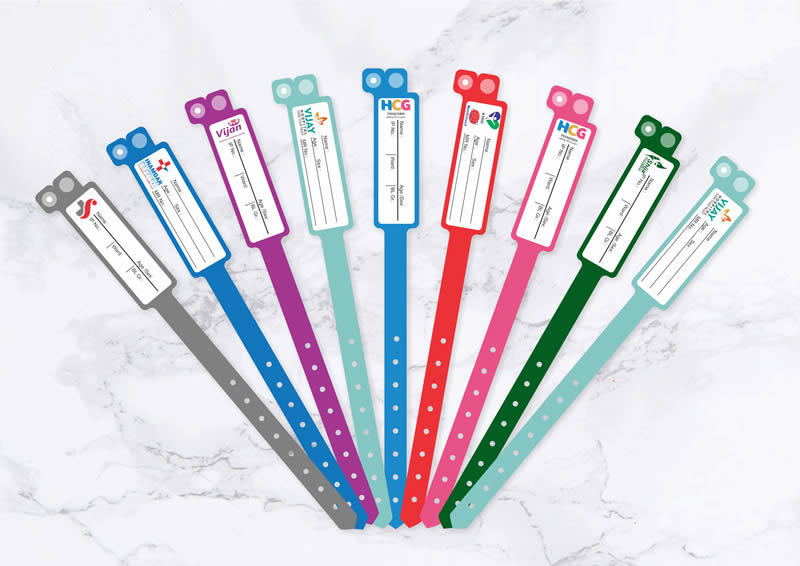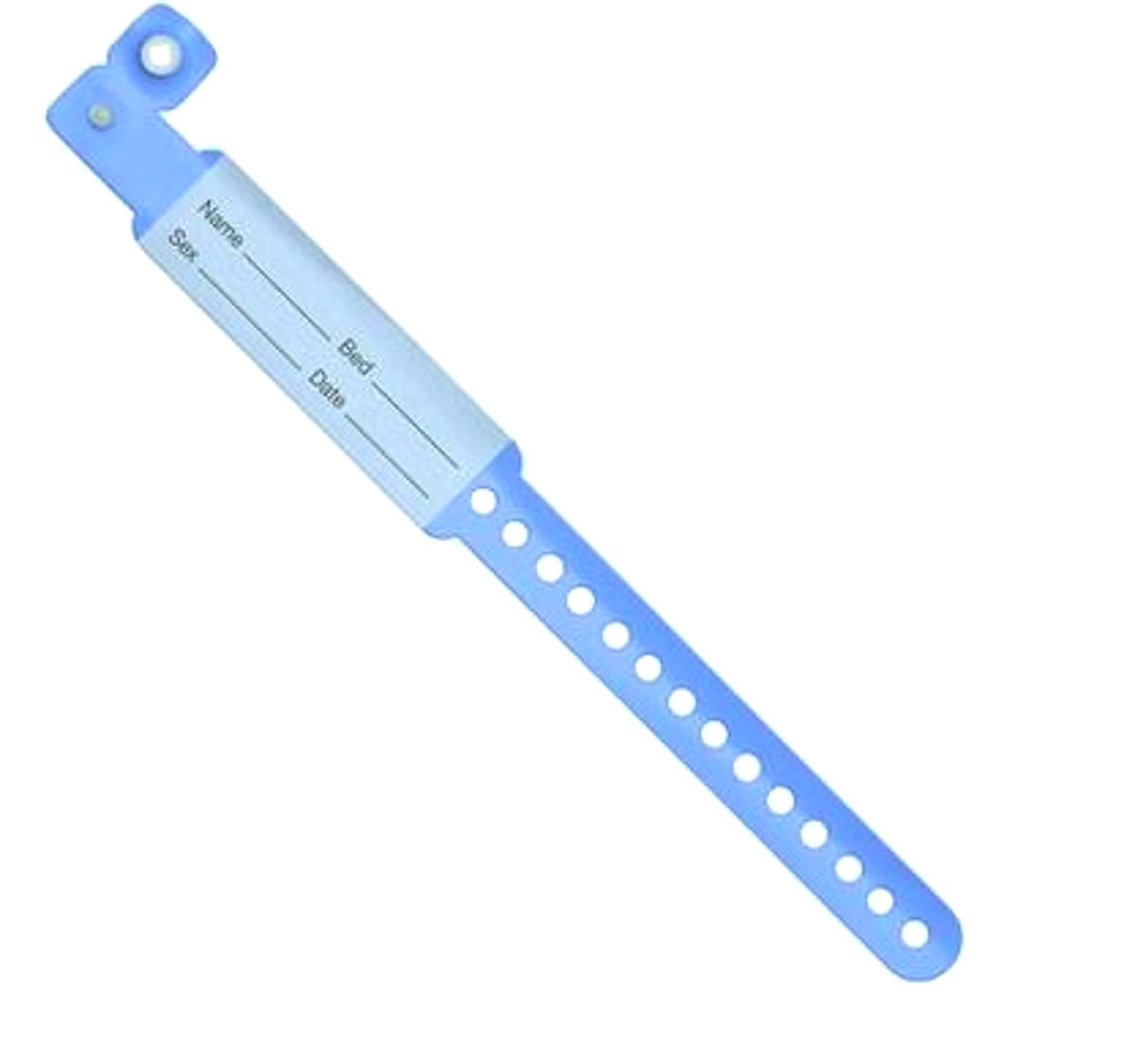Checking Out the Various Types of Patient Identification Band Used in Clinical Facilities
In the detailed globe of health care, the crucial role of Patient Identification bands usually goes unnoticed. These bands, differing from basic paper wristbands to sophisticated RFID bands, form the foundation of Patient safety and security protocols, guaranteeing accuracy in Patient Identification. The large variety of these bands, each with its one-of-a-kind advantages and restrictions, is usually overlooked. As we browse through this topic, one may get insight right into the subtle complexities and vital importance of such bands in medical facilities.
Comprehending the Importance of Patient Identification Bands
While they may look like mere accessories, Patient Identification bands play an important role in clinical centers. These bands function as a critical device for verifying Patient identity, avoiding medical errors related to misidentification. The bands typically present important information such as the Patient's name, age, blood group, and any kind of known allergic reactions. They enable healthcare professionals to quickly access this important info, consequently promoting precise and prompt medical treatment. Patient Identification bands also aid in simplifying management tasks, making sure exact record-keeping and payment. Regardless of their simpleness, these bands personify the concept of Patient safety and security, a cornerstone of high quality healthcare. Without them, the danger of clinical mistakes, and as a result, Patient injury, could dramatically increase.
Typical Paper Wristbands: Their Usage and Limitations
Standard paper wristbands have actually been a staple in Patient Identification throughout various clinical facilities. While their usage is widespread, they harbor particular constraints that may impact their performance in Patient monitoring. This area will certainly focus on the scope of their application and the integral disadvantages related to their usage.
Paper Wristbands: Usage Extent
In the world of Patient Identification, paper wristbands have actually long held a crucial role. These bands are normally utilized in outpatient settings, where the Patient's remain is temporary. The wristbands consist of important details such as the Patient's name, day of birth, and an one-of-a-kind Identification number. This straightforward, yet efficient system, allows clinical professionals to quickly and properly identify individuals, making sure the appropriate treatment is provided. Paper wristbands are also utilized in emergency situation circumstances, where quick Identification is paramount. Their use includes events like blood contribution drives and mass vaccination programs, further highlighting their convenience. In spite of developments in technology, the simple paper wristband continues to be a reputable and cost-effective solution for Patient Identification in various medical care situations.
Limitations of Paper Wristbands
In spite of their prevalent usage, paper wristbands are not without their downsides. In enhancement, paper wristbands usually lack the technical capacities of even more contemporary options, such as barcoding or RFID chips, limiting their performance to just presenting written info. Paper wristbands can create pain or skin inflammation to some patients, specifically when worn for prolonged periods.
Barcoded Wristbands: Innovations in Patient Identification
While Patient Identification has actually long been an essential element of medical care, the introduction of barcoded wristbands indicates a considerable jump forward. These bands take advantage of the simpleness of barcoding innovation, permitting for Patient info to be quickly checked and accessed. They improve the rate and precision of Patient Identification, decreasing the threat of clinical mistakes connected to misidentification. Barcoded wristbands are affordable, simple to generate, and eliminate handwriting errors typical with hand-operated systems. However, they are not without restrictions. While they offer enhancements over standard bands, the barcode can become smudged or used, rendering it unreadable. In spite of this, barcoded wristbands stay a crucial tool in modern-day medical care settings, symbolizing the crossway of modern technology and Patient treatment.
Superhigh Frequency Identification (RFID) Bands: an Action In The Direction Of Futuristic Medical Care
The evolution of Patient Identification bands has brought regarding the appearance of Superhigh frequency Identification (RFID) Bands (patient identification band). These innovative tools present crucial benefits for medical care centers, using a much more efficient and highly progressed means of Patient Identification. The implementation of RFID in browse around this site medical care is a substantial action in the direction of a much more advanced strategy to Patient monitoring and security
Recognizing RFID Bands

RFID Bands: Trick Benefits
Accepting a future where innovation and healthcare combine, superhigh frequency Identification bands supply numerous crucial benefits. Mainly, these bands improve Patient safety and security by supplying precise, immediate Identification, thereby reducing clinical mistakes. RFID bands can keep a large amount of Patient information, including case history and allergic reactions, making it possible for customized care. They also he said streamline management jobs, as the automated data entry replaces hand-operated procedures, boosting performance and minimizing documentation. Furthermore, RFID bands offer real-time monitoring of individuals, crucial in risky environments such as surgical procedure or extensive care. Lastly, these bands are resistant and durable to ecological aspects, ensuring constant performance. Overall, RFID bands stand for a significant innovation in Patient Identification innovation, profiting both clients and medical care companies.
Executing RFID in Medical Care
As we step right into a technologically innovative era, the application of RFID bands in healthcare ends up being progressively essential. These bands supply a smooth way to track and identify people, guaranteeing their safety and improving efficiency in therapy procedures. RFID bands use countless advantages over traditional Identification techniques. They can save a large quantity of data, including the Patient's clinical history and treatment plans, which can be easily accessed by medical care service providers. This data helps doctors make notified decisions relating to the Patient's treatment strategy. RFID bands minimize clinical errors by supplying exact Patient Identification, which is vital in avoiding misdiagnosis or wrong medicine administration. Hence, the application of RFID bands is a considerable step in the direction of improving Patient security and healthcare distribution.

Color-Coded Wristbands: Helping in Quick and Accurate Diagnosis
In the busy setting of a medical center, color-coded wristbands have emerged as vital devices for swift and precise Identification of a client's clinical condition. These wristbands, put on by people, bring specific shades that correspond to different clinical problems or standings. This system is created to see it here supply instant aesthetic signs to medical care carriers, enhancing Patient security and care high quality.
Approaches for Effective Application and Monitoring of Patient ID Bands
Accomplishing ideal usage of Patient Identification bands demands a well-structured method for their implementation and administration. Patient education and learning is likewise important; patients have to comprehend the objective of the bands and the requirement for their constant wear. It's necessary to have a backup strategy in place, such as barcode scanning or biometrics, to make certain that Patient Identification is never endangered.
Final thought
Patient Identification bands are essential in medical centers to guarantee safety and security and accuracy. Typical paper, barcoded, RFID, and color-coded wristbands each hold special advantages, varying from cost-effectiveness to advanced information storage space and immediate clinical notifies. Reliable application and management of these bands can substantially reduce clinical mistakes, boost effectiveness, and improve overall Patient care. Hence, understanding and using these Identification devices is vital for maintaining high criteria in health care.
These bands, differing from simple paper wristbands to sophisticated RFID bands, form the backbone of Patient security protocols, making certain precision in Patient Identification.The development of Patient Identification bands has actually brought about the emergence of Radio Regularity Identification (RFID) Bands. Generally, RFID bands stand for a significant development in Patient Identification innovation, profiting both individuals and medical care companies.
RFID bands minimize clinical errors by supplying precise Patient Identification, which is crucial in preventing misdiagnosis or wrong medication management. Patient education and learning is additionally critical; people have to recognize the function of the bands and the requirement for their constant wear.
Comments on “Best Practices for Implementing a Patient Identification Band System in Your Clinic”